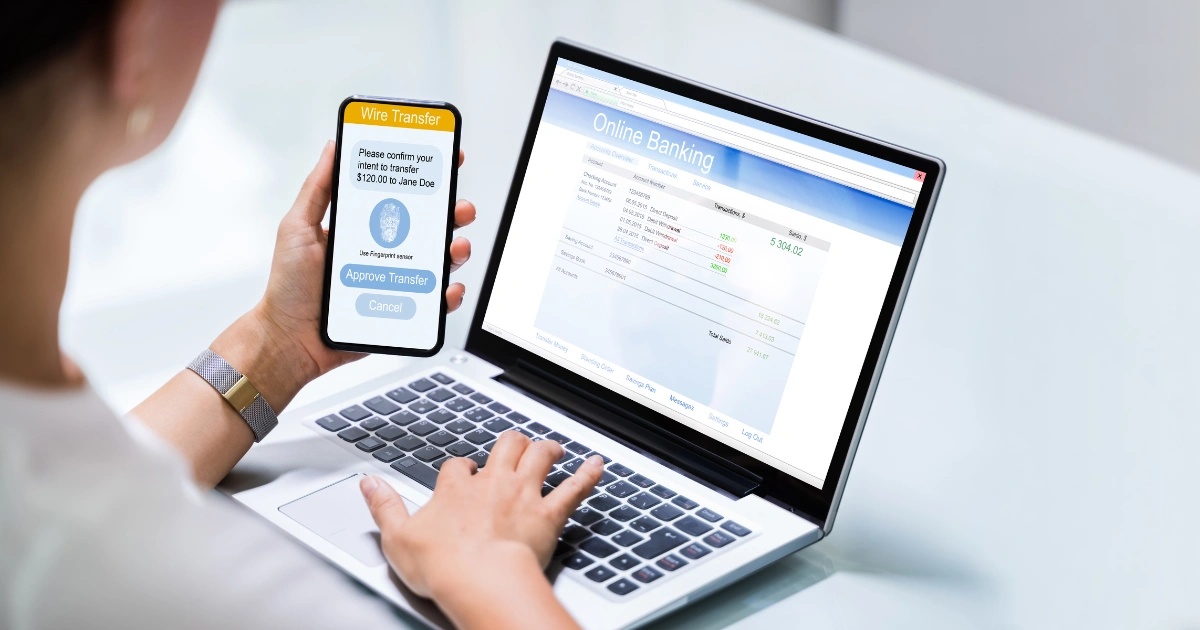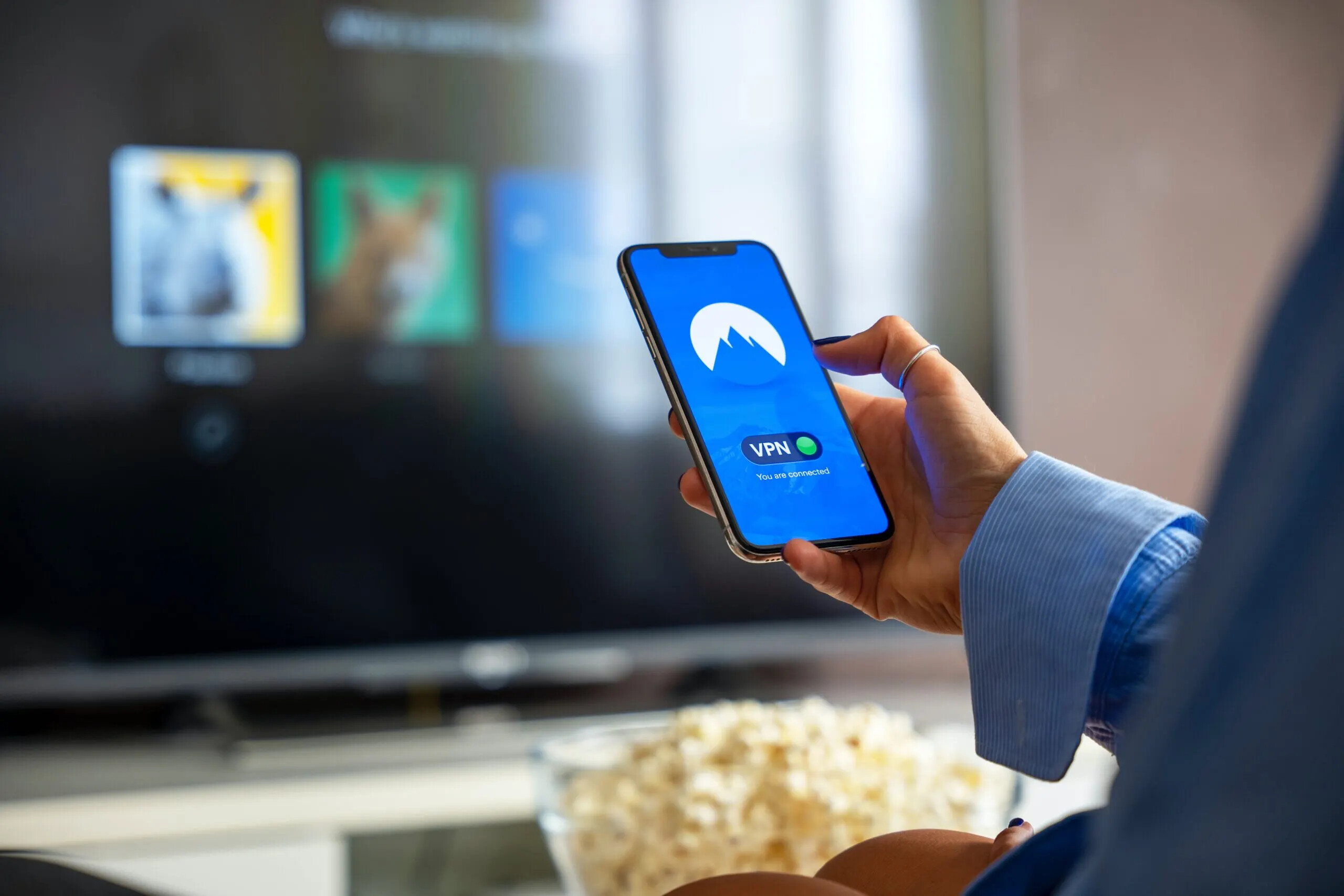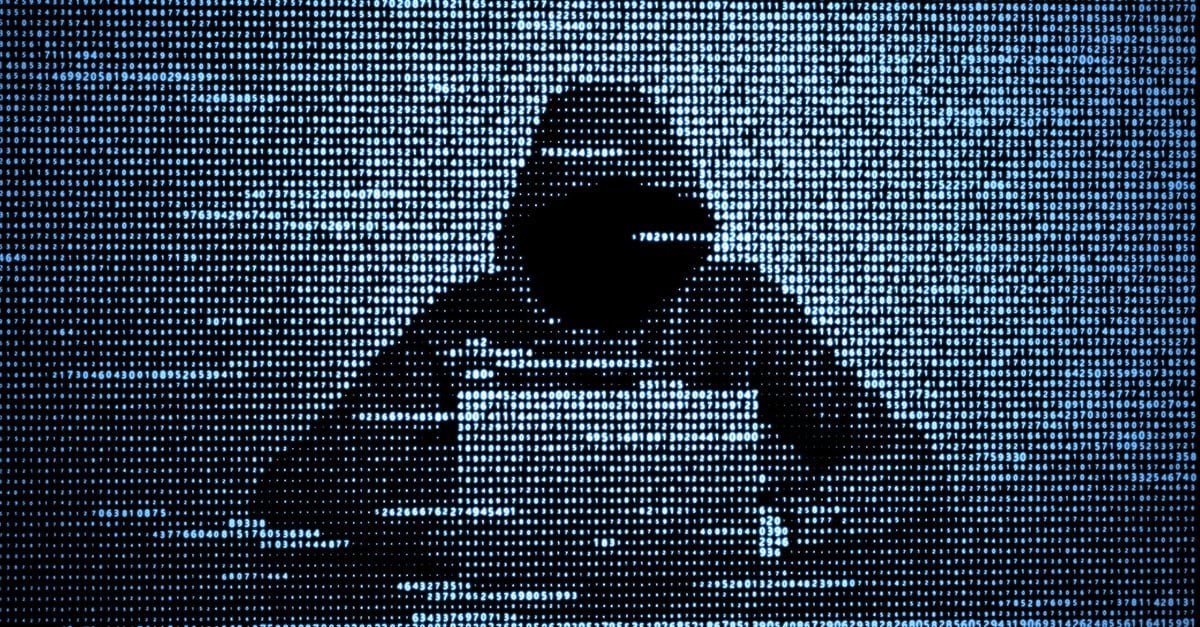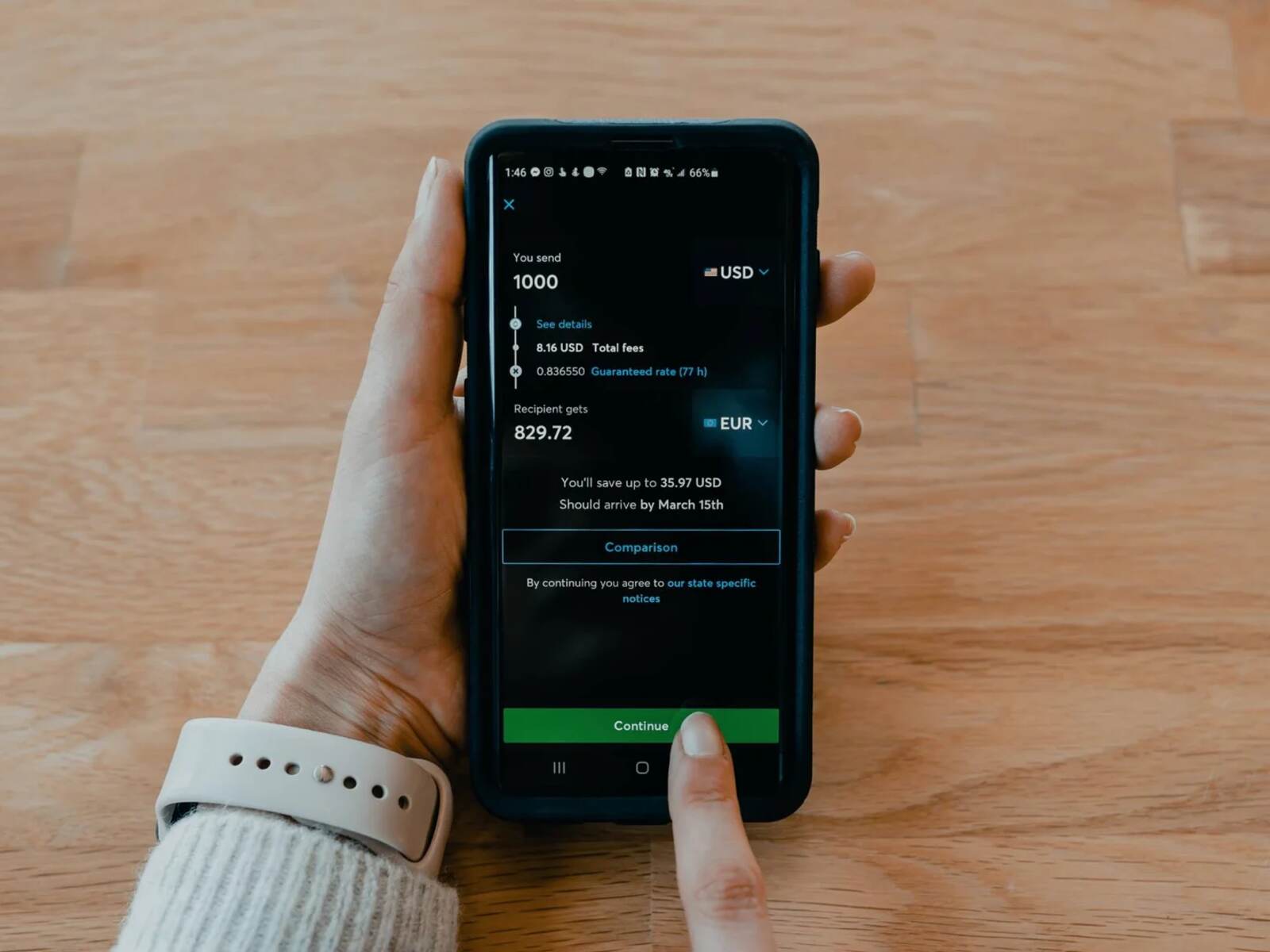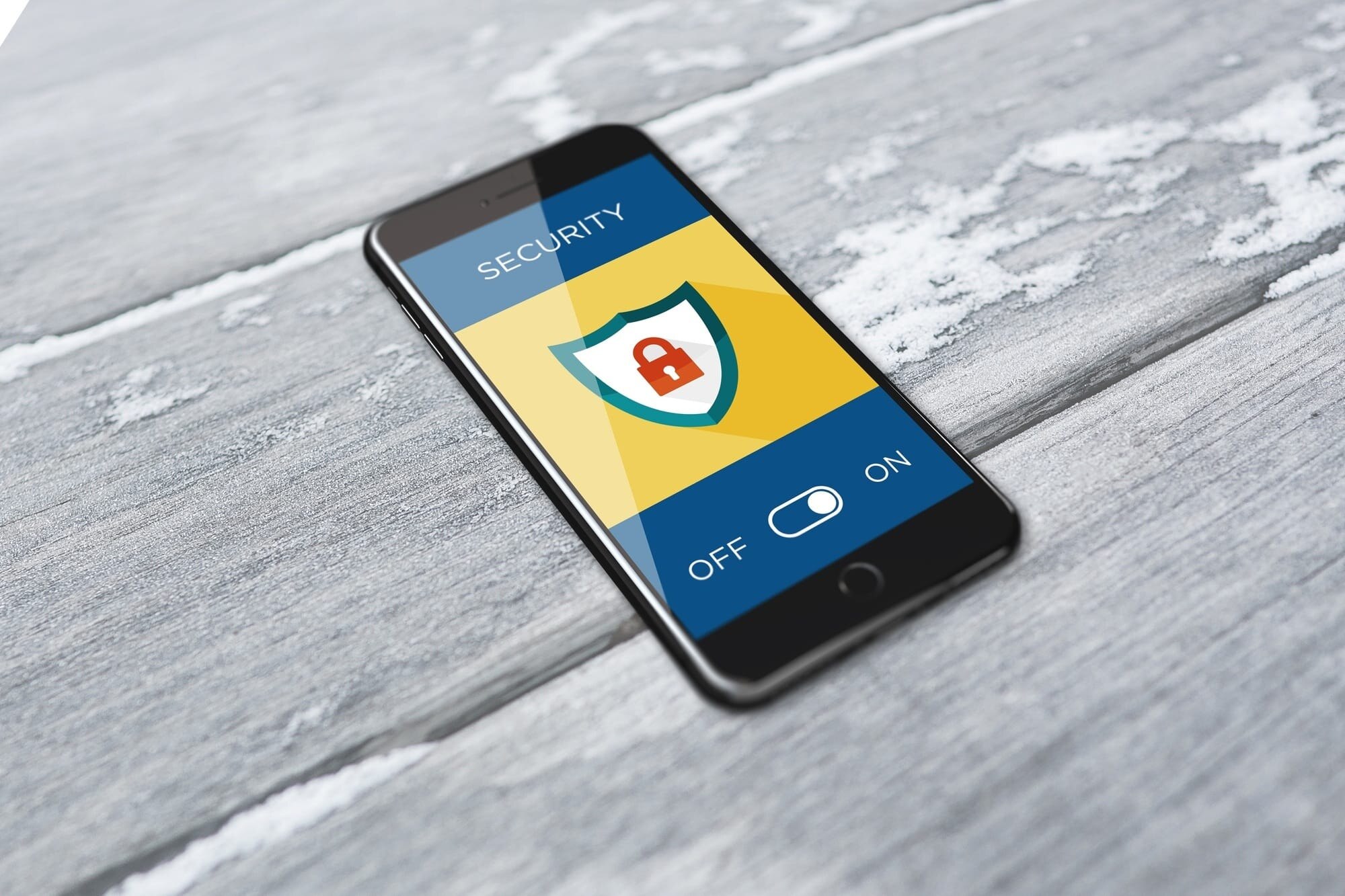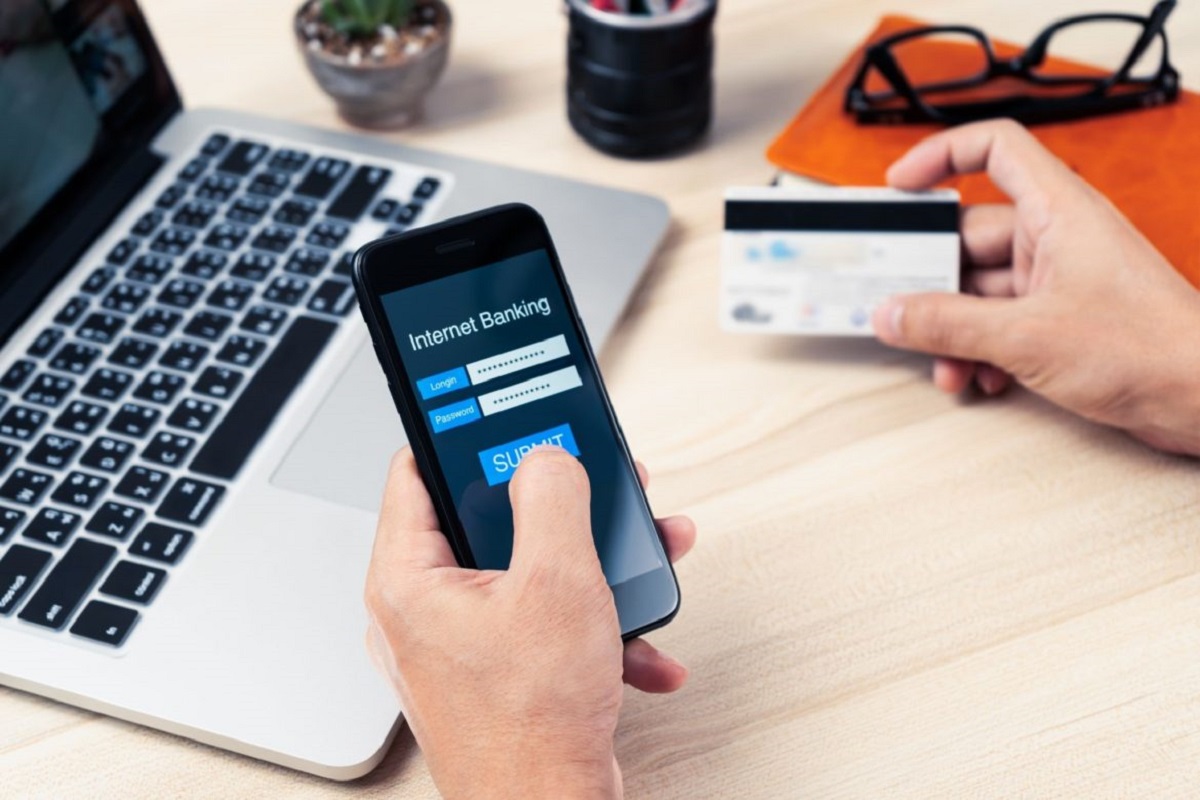Introduction
Online banking has revolutionized the way we manage our finances, providing us with the convenience of accessing our accounts and conducting transactions anytime, anywhere. However, it is important to be aware of potential risks, particularly when using public Wi-Fi networks. Public Wi-Fi networks are widely available in places like coffee shops, airports, and hotels, but they pose significant security threats.
Before delving into the reasons why it is recommended to avoid online banking on public Wi-Fi, let’s first define what online banking and public Wi-Fi are.
Online banking refers to the electronic banking system that allows customers to access their bank accounts and perform various financial activities via the internet. This includes checking account balances, transferring funds, paying bills, and managing investments.
Public Wi-Fi is a wireless network that is open to the public and does not require any authentication or access code to connect. These networks are often provided by businesses or public places to offer internet access to their customers or visitors.
Now that we understand the basics, it is crucial to explore why public Wi-Fi networks can pose risks when it comes to online banking. By understanding these risks, you can take the necessary precautions to protect your sensitive information and financial transactions.
What is Online Banking?
Online banking, also known as internet banking or e-banking, is a service provided by financial institutions that allows customers to manage their bank accounts and conduct various financial transactions through the internet. With online banking, customers can conveniently access their accounts, view transaction history, transfer funds, pay bills, and perform other banking activities from the comfort of their homes or on the go using mobile devices.
Traditional banking methods, such as visiting a bank branch or using an ATM, have their limitations in terms of time and location. Online banking eliminates these limitations by providing customers with 24/7 access to their accounts and the ability to carry out financial tasks anytime, anywhere.
To access online banking services, customers typically need to create an online banking account and register their bank account with the financial institution’s website or mobile app. They are then provided with secure login credentials, such as a username and password, which they can use to access their accounts securely.
Online banking offers a wide range of features and benefits to customers. Some of the key advantages of using online banking include:
- Convenience: Online banking eliminates the need to physically visit a bank branch, saving customers time and effort. They can manage their accounts and complete transactions with just a few clicks.
- Accessibility: With online banking, customers can access their accounts from any device with an internet connection, including computers, smartphones, and tablets. This flexibility allows for banking on the go.
- Real-time information: Online banking provides customers with up-to-date information on their account balances, transaction history, and pending transactions. This allows for better financial management and monitoring of funds.
- Security: Financial institutions invest heavily in security measures to protect customers’ online banking transactions. These measures include encryption, secure login procedures, and multi-factor authentication to ensure the confidentiality and integrity of customer information.
- Cost savings: Online banking reduces the need for paper-based transactions, such as writing checks or receiving paper statements, which can help customers save on fees and reduce their environmental impact.
Overall, online banking provides a convenient and secure way for customers to manage their finances. However, it is crucial to understand the potential risks involved and take necessary precautions to protect personal and financial information when using online banking services.
What is Public Wi-Fi?
Public Wi-Fi refers to wireless networks that are available in public places such as cafes, airports, hotels, libraries, and shopping centers. These networks provide internet access to anyone within range, allowing individuals to connect their devices and access the internet without the need for a password or authentication process.
Public Wi-Fi networks are convenient and widely used by people who are on the go and need to stay connected. They offer a way to browse the internet, check emails, access social media, and even conduct business tasks without using their cellular data. However, it is important to understand that these networks can pose significant security risks.
Unlike private, password-protected Wi-Fi networks in homes or offices, public Wi-Fi networks are open and accessible to anyone. This lack of security measures makes them susceptible to various types of attacks and breaches, putting users’ sensitive information at risk.
One of the main reasons public Wi-Fi networks are risky is that they are often unencrypted or use weak encryption methods. This means that any data transmitted over the network, such as login credentials, financial information, or personal details, can potentially be intercepted and accessed by unauthorized individuals.
Furthermore, public Wi-Fi networks are not typically monitored or controlled by the users connecting to them. This allows hackers and cybercriminals to set up fake or malicious networks with names similar to legitimate ones, tricking users into connecting to them. These fake networks, known as “evil twin” networks, can capture sensitive data or inject malware into the connected devices without the users’ knowledge.
Moreover, public Wi-Fi networks are often crowded and used by multiple users simultaneously. This can make them more vulnerable to attacks like packet sniffing, where an attacker intercepts and analyzes the data packets being transmitted over the network, extracting valuable information.
It is important to note that not all public Wi-Fi networks are inherently unsafe. Some establishments may have taken proper security measures to protect their networks and users. However, it is challenging for individuals to determine which networks are safe and which are not.
Given the security risks involved, it is advisable to exercise caution when using public Wi-Fi networks, especially when conducting sensitive activities such as online banking or accessing personal accounts. Taking appropriate security precautions will help protect your data and maintain your online privacy.
Why is Public Wi-Fi Risky?
Public Wi-Fi networks, while convenient, pose significant security risks for users. Understanding these risks is crucial for protecting sensitive information and maintaining online privacy. Here are some reasons why public Wi-Fi is considered risky:
- Unencrypted Connections: Public Wi-Fi networks often lack encryption or use weak encryption methods, leaving transmitted data vulnerable to interception. Hackers can easily capture and access unencrypted information, such as passwords, usernames, and credit card details.
- Man-in-the-Middle Attacks: Public Wi-Fi networks are prime targets for man-in-the-middle (MITM) attacks. In such attacks, hackers intercept communications between a user’s device and the websites or services they are accessing. By doing so, they can eavesdrop on sensitive data and even modify the information transmitted without the user’s knowledge.
- Packet Sniffing: Packet sniffing is a technique used by attackers to capture and analyze data packets transmitted over a network. Public Wi-Fi networks, with their crowded nature, provide ample opportunities for hackers to conduct packet sniffing attacks. By capturing packets, they can obtain valuable information, including login credentials and other sensitive data.
- Malware Injection: Public Wi-Fi networks can also be used as a platform for distributing malware. Hackers can set up rogue networks or create fake Wi-Fi hotspots to trick unsuspecting users into connecting. Once connected, they can inject malware into the user’s device, compromising its security and potentially stealing sensitive information.
- Phishing Attacks: Attackers can take advantage of public Wi-Fi networks to launch phishing attacks. By creating fake login pages that mimic legitimate websites, hackers can trick users into entering their login credentials. These stolen credentials can then be used to gain unauthorized access to users’ accounts, leading to identity theft or financial loss.
- Unauthorized Access: Public Wi-Fi networks are inherently public, meaning anyone can connect to them. This opens the door for unauthorized individuals to gain access to your device. Once connected to the same network, they may attempt to exploit vulnerabilities in your device’s security or use advanced techniques to access your personal information.
By understanding the security risks that public Wi-Fi networks present, users can take proactive measures to protect themselves and their sensitive data. It is crucial to be aware of these risks and adopt safe practices when using public Wi-Fi networks, especially when engaging in activities that involve sensitive information like online banking.
Types of Security Risks on Public Wi-Fi
Public Wi-Fi networks pose several security risks that can potentially compromise the privacy and security of users’ personal information. Understanding these risks is essential for taking appropriate precautions. Here are some common types of security risks associated with using public Wi-Fi:
- Man-in-the-Middle (MITM) Attacks: In a MITM attack, an attacker intercepts the communication between a user’s device and the websites or services they are accessing. This allows the attacker to eavesdrop on sensitive information, such as login credentials or financial details. They may also modify the data being transmitted, leading to potential account hijacking or financial loss.
- Packet Sniffing: Packet sniffing involves capturing and analyzing data packets transmitted over a network. Public Wi-Fi networks, with their shared nature, provide an ideal environment for packet sniffing attacks. Attackers can intercept unencrypted data packets and extract valuable information, including usernames, passwords, and credit card numbers.
- Malware Injection: Public Wi-Fi networks can serve as a platform for distributing malware. Hackers can set up rogue networks or create fake hotspots to lure unsuspecting users. Once connected, they can inject malware into the user’s device, compromising its security. This can result in data breaches, unauthorized access to personal information, or even control of the infected device.
- Phishing Attacks: Phishing is a technique used to deceive users into revealing sensitive information, such as usernames and passwords. Public Wi-Fi networks can be a breeding ground for phishing attacks. Hackers can create fake login pages that mimic legitimate websites, tricking users into entering their credentials. These stolen credentials can then be used for identity theft or financial fraud.
- Unsecured Network Traffic: Public Wi-Fi networks often lack proper encryption and other security measures, leaving users’ data vulnerable to interception. Without encryption, sensitive information transmitted over these networks can be easily accessed and exploited by attackers.
- Evil Twin Attacks: An evil twin attack involves a hacker setting up a network with a name similar to a legitimate public Wi-Fi network. Users unknowingly connect to the malicious network, thinking it is the legitimate one. Attackers can then intercept their communications, steal login credentials, or inject malware into their devices.
These risks highlight the importance of being cautious when using public Wi-Fi networks. It is essential to take proactive measures to protect personal information and ensure online security. By understanding these risks, individuals can make informed decisions about when and how to connect to public Wi-Fi networks, as well as take appropriate steps to safeguard their data.
Man-in-the-Middle Attacks
Man-in-the-Middle (MITM) attacks are a common security threat on public Wi-Fi networks, where an attacker intercepts the communication between a user’s device and the websites or services they are accessing. By inserting themselves into the middle of the communication, the attacker can eavesdrop on sensitive information, manipulate data, or even impersonate the legitimate parties involved.
MITM attacks exploit the lack of encryption or weak encryption used on public Wi-Fi networks, making it relatively easy for attackers to intercept and decrypt the data being transmitted. There are several methods attackers use to perform MITM attacks:
- Packet Sniffing: Attackers capture and analyze data packets transmitted over the network to gain access to sensitive information. This can include usernames, passwords, credit card details, or any other data transmitted without proper encryption.
- Session Hijacking: Attackers can hijack an ongoing session between the user and a legitimate website or service. By stealing the session cookies or tokens used for authentication, they can gain unauthorized access to the user’s account.
- SSL Stripping: SSL stripping is a technique where the attacker downgrades the secure HTTPS connection to an unsecured HTTP connection, removing the encryption layer. This allows them to intercept and modify the data being transmitted, potentially stealing sensitive information.
- Evil Twin Networks: In an evil twin attack, the attacker sets up a fake Wi-Fi network that looks similar to a legitimate one. When users connect to this malicious network, the attacker can intercept their communication and collect sensitive information or inject malware into their devices.
MITM attacks can have severe consequences for victims. Attackers can gain access to sensitive personal information, such as login credentials, banking details, or personal identification. With this information, they can carry out identity theft, fraud, or unauthorized financial transactions.
To protect yourself from MITM attacks on public Wi-Fi networks, it is crucial to take preventative measures:
- Use HTTPS: Always ensure that you are accessing websites using HTTPS, which encrypts data transmission. Look for the padlock icon in the browser’s address bar as an indication of a secure connection.
- Use a VPN: A Virtual Private Network (VPN) creates a secure, encrypted connection between your device and the internet. It protects your data from interception on public Wi-Fi networks, making it harder for attackers to perform MITM attacks.
- Be cautious with network selection: Only connect to networks that you trust, such as those provided by reputable establishments. Avoid connecting to open, unsecured networks that do not require any authentication.
- Keep software up to date: Ensure that your devices and applications are running the latest versions, as updates often include security patches to address vulnerabilities that attackers may exploit.
- Be vigilant and verify: Pay attention to any unusual signs on the network or when accessing websites. Look out for warnings about invalid certificates or unusual website behavior. When in doubt, avoid entering sensitive information or conducting financial transactions.
By adopting these precautions and being aware of the risks, you can minimize the chances of falling victim to Man-in-the-Middle attacks and protect your online security and privacy.
Packet Sniffing
Packet sniffing is a technique used by attackers to capture and analyze data packets transmitted over a network, including public Wi-Fi networks. It is a form of network eavesdropping that allows an attacker to intercept and view the contents of unencrypted network traffic. Packet sniffing attacks on public Wi-Fi networks are a significant concern as they can expose sensitive information and compromise users’ privacy.
In a packet sniffing attack, an attacker uses specialized software or devices known as packet sniffers or network analyzers to capture and examine the data packets being sent and received over a network. Once collected, the attacker can analyze the captured packets to extract valuable information such as login credentials, financial transactions, or personal information.
Public Wi-Fi networks are particularly vulnerable to packet sniffing attacks due to their shared nature. With multiple users connecting and transmitting data simultaneously, attackers can easily target and intercept unencrypted packets. This can be especially problematic as many websites and online services still rely on unencrypted HTTP connections, leaving user data susceptible to capture.
The consequences of packet sniffing attacks can be severe. Attackers can gain access to sensitive information, such as usernames, passwords, credit card numbers, or personal identification details. This information can then be used for a variety of malicious purposes, including identity theft, financial fraud, or unauthorized access to accounts.
To protect yourself from packet sniffing attacks on public Wi-Fi networks, consider taking the following precautions:
- Use Encryption: Always ensure that you are sending data over an encrypted connection, especially when accessing sensitive websites or conducting online transactions. Look for the HTTPS protocol and the padlock icon in the browser’s address bar as indications of a secure connection.
- Use a VPN: A Virtual Private Network (VPN) creates a secure, encrypted tunnel between your device and the internet, making it extremely difficult for attackers to sniff your network traffic. By routing your data through a VPN server, all your internet activity is encrypted and protected.
- Be cautious with unencrypted connections: Avoid accessing websites or services that do not use encryption, particularly when entering sensitive information or conducting financial transactions.
- Keep software up to date: Regularly update your devices and applications to ensure they have the latest security patches. This helps protect against known vulnerabilities that attackers may exploit to perform packet sniffing attacks.
- Consider using a firewall: Enable a firewall on your device to monitor and control incoming and outgoing network traffic. This can help detect and block suspicious activities, including some packet sniffing attempts.
By implementing these measures, you can significantly reduce the risk of falling victim to packet sniffing attacks on public Wi-Fi networks. Safeguarding your sensitive information and maintaining online privacy should always be a top priority when accessing the internet in public places.
Malware Injection
Malware injection is a significant security risk associated with using public Wi-Fi networks. Attackers can exploit the lack of security measures on these networks to inject malicious software, or malware, into users’ devices. Once infected, the attacker can gain unauthorized access to sensitive information, monitor online activities, or even take control of the device.
There are several methods attackers use to inject malware on public Wi-Fi networks:
- Fake Hotspots: Attackers set up fake or rogue Wi-Fi networks with names similar to legitimate ones provided by businesses. When users unknowingly connect to these malicious networks, the attacker can inject malware into their devices and potentially gain access to their personal information.
- Compromised Websites: Attackers can inject malware into legitimate websites that users may visit while connected to a public Wi-Fi network. By exploiting vulnerabilities in the website’s code or injecting malicious scripts, the attackers can infect the devices of unsuspecting users.
- Phishing Emails or Messages: Attackers may send phishing emails or messages to users connected to public Wi-Fi networks. These emails or messages often contain malicious attachments or links that, when clicked, initiate the download and installation of malware.
- Malicious Downloads: Attackers may create fake files or software updates that appear legitimate. When users download and install these files while connected to a public Wi-Fi network, they unknowingly infect their devices with malware.
Once malware is injected into a device, it can have devastating consequences. Attackers can gain access to sensitive information, such as login credentials, bank account details, or personal identification information. They may also install keyloggers to capture keystrokes, enabling them to monitor the victim’s online activities and collect additional confidential data.
To protect yourself from malware injection on public Wi-Fi networks, consider implementing the following protective measures:
- Use a Trusted Network: Connect to public Wi-Fi networks that are provided by reputable establishments. Verify the network name and seek confirmation from staff to ensure you are connecting to the correct network.
- Be Cautious of Downloads: Avoid downloading files or software updates from untrusted sources while connected to public Wi-Fi. Only download files from reputable websites and verify the authenticity of software updates.
- Keep Antivirus Software Updated: Install and regularly update reliable antivirus software on your device. This helps detect and block known malware and provides an extra layer of protection against new or emerging threats.
- Avoid Clicking Suspicious Links: Be wary of unsolicited emails or messages containing suspicious links. Verify the authenticity of the source before clicking on any links or opening attachments.
- Use a VPN: Employing a Virtual Private Network (VPN) creates an encrypted tunnel for your internet traffic, protecting it from interception and ensuring your online activities remain private. This can help prevent malware injection on public Wi-Fi networks.
By taking these precautions and being vigilant while connected to public Wi-Fi networks, you can significantly reduce the risk of malware injection and protect your devices and personal information.
Unauthorized Access to Personal Information
One of the significant risks of using public Wi-Fi networks is the potential for unauthorized access to personal information. When connected to an unsecured network, attackers can intercept and access sensitive data, compromising users’ privacy and putting their personal information at risk.
There are various techniques attackers use to gain unauthorized access to personal information on public Wi-Fi networks:
- Network Sniffing: Attackers can use packet sniffing techniques to intercept and capture data packets transmitted over the network. By analyzing these packets, they can gain access to usernames, passwords, credit card numbers, or any other unencrypted data being transmitted.
- Man-in-the-Middle (MITM) Attacks: MITM attacks involve an attacker intercepting the communication between a user’s device and the websites or services they are accessing. In doing so, the attacker can eavesdrop on sensitive information, modify data, or even impersonate trusted parties to gain access to personal information.
- Session Hijacking: In a session hijacking attack, an attacker steals the session cookies or tokens used for authentication. By gaining control of a valid session, the attacker can bypass login credentials and gain unauthorized access to personal accounts or sensitive information.
- Brute Force Attacks: Attackers may attempt to gain unauthorized access to personal accounts by using automated tools to guess usernames and passwords. They exploit weak or easily guessable credentials to gain entry and access personal information.
- Wi-Fi Phishing: Hackers can set up fake or rogue Wi-Fi networks that mimic legitimate networks. When users unknowingly connect to these fake networks, the attackers can capture login credentials or other personal information entered over that unsecured network.
The consequences of unauthorized access to personal information can be severe, ranging from identity theft to financial fraud. Attackers can use the stolen information to impersonate individuals, make unauthorized transactions, or gain access to private accounts.
To protect yourself from unauthorized access on public Wi-Fi networks, consider implementing the following measures:
- Use Secure Websites: Ensure that you are accessing websites using HTTPS, which encrypts your data transmission. Look for the padlock icon in the browser’s address bar as an indication of a secure connection.
- Enable Two-Factor Authentication: Two-factor authentication provides an additional layer of security by requiring users to provide a second verification method, such as a unique code sent to their mobile device, in addition to the regular login credentials.
- Use a VPN: Employing a Virtual Private Network (VPN) creates an encrypted tunnel for your internet traffic, protecting it from interception and ensuring your online activities remain private. This helps safeguard personal information from unauthorized access on public Wi-Fi networks.
- Be Mindful of Wi-Fi Network Selection: Only connect to known and trusted Wi-Fi networks. Avoid connecting to open, unsecured networks without any authentication requirements.
- Regularly Change Passwords: Routinely update your passwords for online services and accounts. Use strong and unique passwords that are difficult to guess. Avoid using the same password for multiple accounts.
By implementing these security measures and being cautious while using public Wi-Fi networks, you can significantly reduce the risk of unauthorized access to your personal information and protect your online privacy.
How to Protect Yourself
While the risks associated with public Wi-Fi networks cannot be completely eliminated, there are several precautions you can take to protect yourself and your sensitive information. By following these best practices, you can minimize the chances of falling victim to security threats and retain your online privacy:
- Use a Virtual Private Network (VPN): Utilize a VPN service to establish a secure and encrypted connection between your device and the internet. A VPN ensures that your data remains private and secure, even when connected to public Wi-Fi networks.
- Ensure You Are Connecting to a Trusted Network: Verify the legitimacy of the Wi-Fi network before connecting. Seek confirmation from staff or use official networks provided by reputable establishments. Avoid connecting to open or unsecured networks that do not require any authentication.
- Use a Secure Browser: Opt for web browsers that prioritize security and privacy. Ensure your browser is up to date and incorporates features such as built-in antivirus protection, anti-phishing measures, and automatic blocking of insecure websites.
- Enable Two-Factor Authentication (2FA): Enable 2FA whenever possible for your online accounts. 2FA adds an extra layer of security by requiring a second form of verification, such as a unique code sent to your mobile device, in addition to your regular login credentials.
- Monitor Your Accounts Regularly: Keep a close eye on your bank accounts, credit cards, and other financial accounts. Regularly review your transactions and account statements for any suspicious activity. Report any unauthorized charges or discrepancies immediately.
- Securely Store Passwords: Use strong and unique passwords for each online account. Avoid using the same password across multiple accounts. Consider using a password manager to securely store and manage your passwords.
- Be Cautious with Personal Information: Avoid sharing sensitive personal information, such as your Social Security number or full address, over public Wi-Fi networks. Be selective about the information you provide while connected to these networks.
- Keep Software Updated: Regularly update your device’s operating system, applications, and antivirus software. Software updates often include security patches that address known vulnerabilities and protect against emerging threats.
- Educate Yourself: Stay informed about the latest security threats and best practices for online safety. Educate yourself on common phishing techniques, malware scams, and other cyber threats to better protect yourself from potential risks.
By implementing these protective measures, you can significantly enhance your security posture when using public Wi-Fi networks. While it is impossible to eliminate all risks, being proactive and adopting safe practices will go a long way in safeguarding your sensitive information and maintaining your online privacy.
Use a Virtual Private Network (VPN)
A Virtual Private Network (VPN) is a powerful tool for ensuring the security and privacy of your online activities, especially when connecting to public Wi-Fi networks. A VPN creates a secure and encrypted connection between your device and the internet, allowing you to browse the web anonymously and protect your sensitive information from interception by unauthorized individuals.
Here are some key benefits of using a VPN:
- Encryption of Data: A VPN encrypts your internet traffic, scrambling it into unintelligible data that can only be deciphered by your device and the VPN server. This encryption prevents eavesdroppers on public Wi-Fi networks from intercepting and understanding the data you transmit.
- Protection from Packet Sniffing: By encrypting your data, a VPN prevents attackers from using packet sniffing techniques to capture and analyze your network traffic. Even if they manage to intercept your data packets, the encrypted contents remain unreadable.
- Anonymity and Privacy: When using a VPN, your true IP address is masked and replaced with the IP address of the VPN server. This adds an extra layer of anonymity, making it difficult for websites and online services to track your online activities and trace them back to your device.
- Access to Restricted Content: A VPN allows you to access geo-restricted or censored websites and services. By connecting to a server in a different location, you can bypass regional restrictions and enjoy unrestricted access to streaming platforms, social media, and other online content.
- Secure Remote Access: VPNs are widely used by businesses to provide secure remote access for employees. When connecting to a corporate network through a VPN, employees can safely access company resources and data, ensuring that sensitive information remains protected.
- Protection against Wi-Fi Phishing and Evil Twin Attacks: A VPN can offer protection against Wi-Fi phishing attacks and evil twin attacks. By encrypting your online activities, it becomes difficult for attackers to trick you into connecting to their malicious networks or intercept your data on unsecured Wi-Fi networks.
To use a VPN, you need to install VPN client software or mobile apps provided by reputable VPN service providers. These applications enable you to connect to VPN servers hosted in different locations around the world. Once connected, your internet traffic is routed through the VPN server using a secure connection.
It is important to choose a reliable and trusted VPN service provider that emphasizes privacy and security. Look for providers that do not keep logs of your online activities and have strong encryption protocols in place.
While a VPN offers increased security and privacy, it is essential to understand that it is not a foolproof solution. The performance and reliability of a VPN can depend on various factors, including the quality of the VPN service, the distance to the VPN server, and the speed of your internet connection.
By using a VPN, you can significantly enhance your online security and privacy when connecting to public Wi-Fi networks. It acts as a shield, protecting your data from potential threats and ensuring your online activities remain private and secure.
Ensure You Are Connecting to a Trusted Network
When connecting to a public Wi-Fi network, it is crucial to verify that you are connecting to a trusted network provided by a reputable establishment. Taking precautions to ensure network trustworthiness can significantly minimize the potential security risks associated with public Wi-Fi networks.
Here are some essential steps to take when connecting to a public Wi-Fi network:
- Seek Confirmation from Staff: If you are in an establishment such as a coffee shop, hotel, or airport, ask the staff for the correct network name and password. This helps ensure that you are connecting to the legitimate network rather than falling victim to an impersonation or “evil twin” attack.
- Check for Official Signage: Look for official signage or communications from the establishment about the Wi-Fi network. Legitimate networks will often have signs displaying the network name or provide instructions on how to connect.
- Verify the Network Name: Before connecting to a Wi-Fi network, double-check the network’s name to ensure it matches the legitimate network name provided by the establishment. Hackers and attackers often create fake hotspot networks with names similar to popular networks to deceive users.
- Be Wary of Unsecured Networks: Avoid connecting to open, unsecured networks that do not require any authentication. These networks are more susceptible to attacks, as anyone can connect to them without restrictions.
- Use Network Encryption: Choose Wi-Fi networks that employ encryption methods like WPA2 (Wi-Fi Protected Access II) or WPA3. Encrypted networks provide an additional layer of protection by encrypting the data transmitted between your device and the network.
- Use Your Cellular Data Network: If you are unsure about the security of the available Wi-Fi networks or cannot find a trusted network, consider using your cellular data network instead. While this may incur data usage charges, it provides a more secure connection compared to public Wi-Fi networks.
- Disable Automatic Wi-Fi Connections: Turn off the automatic connection feature on your device. This prevents your device from automatically connecting to unknown or potentially malicious networks without your knowledge.
Connecting to a trusted network is essential in safeguarding your personal information and protecting yourself from potential security threats. By taking the time to verify the legitimacy of the network before connecting, you can significantly reduce the risk of falling victim to attacks or data breaches.
Remember, it is always better to be cautious and selective when connecting to public Wi-Fi networks. Your online security and privacy are worth the extra effort of ensuring network trustworthiness.
Use a Secure Browser
When using public Wi-Fi networks, one important step to enhance your online security is to use a secure browser. A secure browser is designed with advanced security features to protect your browsing activities and personal information from potential threats. By utilizing a secure browser, you can minimize the risks of attacks such as phishing attempts, malware infections, and unauthorized tracking.
Here are some key features to look for in a secure browser:
- HTTPS Encryption: A secure browser emphasizes the use of HTTPS (Hypertext Transfer Protocol Secure) for secure communication between your device and websites. Look for the padlock icon in the browser’s address bar, indicating an encrypted connection. This ensures that your data is encrypted and protected from interception.
- Popup Blocker: Secure browsers often have built-in popup blockers that help prevent annoying and potentially malicious popup advertisements or windows from opening. This protects you from potential phishing attempts or inadvertent clicks on malicious content.
- Privacy Controls: A secure browser should provide robust privacy controls, allowing you to manage and customize the information shared with websites. Look for options to block third-party tracking cookies, enable private browsing modes, and control permissions for accessing location, camera, and microphone.
- Malware and Phishing Protection: A secure browser incorporates mechanisms to detect and warn users about potentially malicious websites, phishing attempts, and malware downloads. These features often rely on built-in databases, community-driven reputation systems, or real-time analysis to identify and block threats.
- Automatic Updates: Regular browser updates are crucial for staying protected against the latest security vulnerabilities. A secure browser should automatically update to the latest version, ensuring that security patches and bug fixes are promptly applied.
- Extension Security: If you use browser extensions, a secure browser should have a robust extension management system and strict security measures in place. It should verify the authenticity and safety of extensions before allowing their installation, reducing the risk of malicious extensions compromising your security.
When using a secure browser, it is still important to practice safe browsing habits:
- Verify Website Security: Look for HTTPS in the website URLs for sensitive activities like online banking or entering personal information. Additionally, be cautious when visiting unknown or suspicious websites.
- Avoid Clicking Unknown Links: Be mindful of the links you click, especially in emails, social media messages, or unknown websites. Hover over links to verify their destination before clicking, as phishing attempts often use deceptive links.
- Keep Your Browser Updated: Enable automatic updates or regularly check for updates to ensure that your browser is equipped with the latest security enhancements.
- Use Antivirus and Security Software: Install reputable antivirus and security software to provide an additional layer of protection against malware and other online threats.
- Be Cautious with Downloads: Only download files or software from trusted sources. Be vigilant and scan downloaded files for malware before opening or executing them.
By using a secure browser and following safe browsing practices, you can significantly reduce the risk of falling victim to various online threats. Protecting your personal information and maintaining your online privacy is essential, especially when using public Wi-Fi networks.
Enable Two-Factor Authentication
Enabling Two-Factor Authentication (2FA) provides an additional layer of security to protect your online accounts, including those accessed through public Wi-Fi networks. 2FA adds an extra step to the login process, requiring you to provide a second form of verification in addition to your regular username and password. This verification can help safeguard your accounts even if your login credentials are compromised.
Here’s how Two-Factor Authentication works:
- Step 1: Enter Username and Password: When logging in to an account enabled with 2FA, you enter your regular username and password as usual.
- Step 2: Provide Second Verification: After entering your credentials, the 2FA system prompts you to provide a second form of verification. This can include a unique code sent to your mobile device, a fingerprint scan, a voice recognition, or a physical security key.
- Step 3: Access Granted: Once you provide the correct second verification, you are granted access to your account.
Enabling Two-Factor Authentication adds an extra layer of security because even if someone obtains your username and password, they would still need the additional verification to access your account. This makes it significantly more difficult for attackers to gain unauthorized access to your sensitive information, even if they manage to intercept your login credentials while connected to a public Wi-Fi network.
Here are some key benefits of using Two-Factor Authentication:
- Enhanced Security: 2FA significantly strengthens the security of your online accounts by requiring a second factor to verify your identity. Even if your password is compromised, an attacker would need the second verification to access your account.
- Protection from Credential Theft: With 2FA, even if an attacker gains access to your password through tactics like phishing or keylogging, they would still need the second factor (such as a unique code on your mobile device) to proceed.
- Compatibility with Multiple Devices: Two-Factor Authentication can be used with various devices, including smartphones, tablets, or physical security keys. This flexibility allows you to choose the verification method that best suits your needs.
- Widespread Adoption: Many online services, including email providers, social media platforms, and financial institutions, offer 2FA as a security option. It is highly recommended to enable 2FA on all accounts where it is available.
To enable Two-Factor Authentication for your accounts:
- Check Account Settings: Login to your accounts and navigate to the security or settings section to see if Two-Factor Authentication is available.
- Choose a Verification Method: Select your preferred second verification method. This may involve receiving codes via SMS, using authenticator apps like Google Authenticator, or using biometric authentication methods such as fingerprints or facial recognition, depending on what the service offers.
- Follow the Setup Process: Follow the steps provided by the service to complete the setup process for Two-Factor Authentication. This may involve scanning QR codes, registering devices, or setting up backup authentication methods.
- Keep Backup Codes: Some services provide backup codes that can be used if you lose access to your primary verification method. Make sure to store these codes in a safe place, such as a password manager or a secure offline location.
- Use an Authenticator App: Consider using an authenticator app, such as Google Authenticator or Authy, to generate verification codes. These apps provide a more secure option than SMS-based codes as they are not subject to SIM swapping or interception.
- Regularly Review and Manage Accounts: Regularly review and manage your accounts to ensure Two-Factor Authentication is still enabled, especially after making changes to your devices or phone numbers.
By enabling Two-Factor Authentication, you greatly enhance your account security and create an additional barrier against unauthorized access when using public Wi-Fi networks. Take the time to enable 2FA on your accounts wherever possible to safeguard your sensitive information.
Monitor Your Accounts Regularly
Regularly monitoring your accounts is essential for maintaining the security and integrity of your financial and online accounts, especially when using public Wi-Fi networks. By actively monitoring your accounts, you can identify any suspicious activities, detect unauthorized access, and take prompt action to mitigate potential risks.
Here are some key reasons why monitoring your accounts is crucial:
- Early Detection of Suspicious Activity: Regularly reviewing your account statements and transaction histories enables you to identify any unusual or unauthorized transactions. This could include unrecognized charges, withdrawals, or transfers, which may indicate fraudulent activity.
- Timely Response to Security Breaches: Monitoring your accounts allows you to promptly respond to potential security breaches. If you notice any suspicious activity, you can contact your financial institution or service provider immediately to report the incident and take appropriate action to protect your accounts.
- Protection Against Identity Theft: By monitoring your accounts, you can detect any signs of identity theft, such as fraudulent account openings or unauthorized changes to personal information. Early detection allows you to take steps to mitigate the impact and prevent further damage.
- Prevent Financial Loss: Regularly monitoring your accounts helps prevent financial loss resulting from unauthorized transactions or fraudulent activities. By promptly identifying and reporting suspicious activity, you can work with your financial institution to recover lost funds or prevent further unauthorized access to your accounts.
Here are some tips for effectively monitoring your accounts:
- Review Account Statements: Regularly review your bank statements, credit card statements, and other financial account statements. Check for any unfamiliar transactions, errors, or discrepancies.
- Monitor Online Activity: Make use of online banking platforms and account management interfaces provided by your financial institutions. Regularly log in to check your account balances, transaction history, and account settings.
- Set Up Account Alerts: Take advantage of account notification and alert features provided by your financial institutions. Configure alerts for specific types of transactions, such as large withdrawals or unusual activity, to receive real-time notifications of any potentially fraudulent activity.
- Review Credit Reports: Obtain and review your credit reports from the major credit reporting agencies at least once a year. Look for any unauthorized accounts or discrepancies that could indicate identity theft.
- Use Security Apps: Install reputable security apps on your devices to monitor for suspicious activities and potential security breaches. These apps can provide additional layers of protection and alerts for your accounts.
- Be Vigilant: Stay vigilant and remain attentive to any signs of unauthorized access or suspicious activity. Report any concerns or suspicions promptly to your financial institution or service provider.
Regularly monitoring your accounts is an essential part of maintaining good personal cybersecurity hygiene. By being proactive and conducting regular checks, you can promptly detect and respond to any potential security threats and keep your accounts secure, even when using public Wi-Fi networks.
Conclusion
When it comes to using public Wi-Fi networks, it is important to be aware of the potential security risks and take necessary precautions to protect your sensitive information. While the convenience of accessing the internet on-the-go is undeniable, it should not come at the expense of your online security and privacy.
Throughout this article, we have discussed the various risks associated with using public Wi-Fi networks, such as the potential for man-in-the-middle attacks, packet sniffing, malware injection, unauthorized access to personal information, and more. These risks highlight the need for proactive measures to safeguard your data while using public Wi-Fi networks.
Some key steps to protect yourself include using a Virtual Private Network (VPN) to encrypt your internet traffic, ensuring you are connecting to trusted networks provided by reputable establishments, using a secure browser with advanced security features, enabling Two-Factor Authentication (2FA) for your accounts, regularly monitoring your accounts for suspicious activities, and being cautious with the information you share over public networks.
By following these best practices, you can significantly reduce the chances of falling victim to security threats and keep your personal information secure. Remember to stay updated on the latest security practices, be vigilant when using public Wi-Fi networks, and adapt your security measures as technology evolves.
Ultimately, it is important to strike a balance between convenience and security. While it may be tempting to perform sensitive activities, such as online banking, while connected to public Wi-Fi, it is advisable to err on the side of caution and save those activities for more secure networks. Prioritizing your online security and privacy will go a long way in protecting yourself from potential risks and ensuring peace of mind in an increasingly connected world.









